The Green New Deal Could Rise Again, Despite Current Politics


Public opinion researchers are already beginning to find evidence of support for the basic tenets of this Green New Deal. Businesses may find it smart in the long run to align themselves with this movement, despite the current political climate in the U.S. Congress.
Yesterday, we discussed how the Green New Deal has plenty of hurdles to overcome, including the fact that its critics are pouncing on and picking apart the plan before the exact details and costs are known. The conventional wisdom is that Senate Republicans will vote the proposal down, leaving egg on the face of proponents including Alexandria Ocasio-Cortez. Rushing the Senate vote, however, could turn out to be a case of being careful what you wish for.
As Neil Donahue suggested on the politics blog The Hill yesterday, the business lens can apply to the conventional framing of a right-left political divide.
The U.S. public seems to be behind much of this plan
Public opinion researchers are already beginning to find evidence of support for the basic tenets of this Green New Deal. And while Speaker of the House Nancy Pelosi was cautious in describing the plan as saying she appreciated the “enthusiasm,” polling data indicates that the American public is ready to have such a debate.
Last week, the Yale Program on Climate Change Communication published a new survey that found a positive reaction when they presented this exact proposition to participants:
“Some members of Congress are proposing a ‘Green New Deal’ for the U.S. They say that a Green New Deal will produce jobs and strengthen America’s economy by accelerating the transition from fossil fuels to clean, renewable energy. The Deal would generate 100 percent of the nation’s electricity from clean, renewable sources within the next 10 years; upgrade the nation’s energy grid, buildings, and transportation infrastructure; increase energy efficiency; invest in green technology research and development; and provide training for jobs in the new green economy."
Yale’s researchers found that 81 percent of registered voters either “strongly support” or “somewhat support” the plan. That included a 75 percent positive response from voters identifying themselves as moderate Republicans, and 57 percent who identified as conservative Republicans.
That is consistent with earlier surveys showing strong bipartisan support for renewable energy.
For example, a 2016 Pew Research survey question on solar farms found 83 percent approval by conservative Republicans.
Also in 2016, a Vanderbilt University study that same year found bipartisan support for renewable energy on a state-by-state basis as well.
The Business Case for the Green New Deal
Adding to this literature, a new survey by researchers at Washington State University underscores a powerful area of common ground between Democrats and Republicans. The researchers summarize:
“While conservatives and liberals tend to disagree on many environmental issues, they both view the development of solar power and other forms of renewable energy as financially savvy and a step towards self-sufficiency.”
The study, published in the journal Environmental Politics, found that “the study's conservative respondents were more likely to view [rooftop solar panels] as financially wise and a good use of resources.”
That message is certainly useful to stakeholders in the renewable energy sector. The near-universal attraction of financial savvy and self-sufficiency can also ripple out to provide leverage for other business that want to increase their renewable energy profile.
In other words, renewable energy has become a branding message that crosses party lines.
The bipartisan movement picks up steam
As for producing a political headache mainly for Senate Democrats, the picture is a little more complicated than it may seem.
Massachusetts and Maryland are two standout examples. Though both states currently have Republican governors, they are both members of the U.S. Climate Alliance, making them the only two Republican-helmed states in the 20-state body (21 including Puerto Rico).
If a “no” vote on the Green New Deal would not only be politically awkward for the four Democratic senators from those states, it would also put their Republican governors in a bad light.
Both governors are on record supporting clean power. Their states are also members of the U.S. Department of Energy’s new national wind energy R&D consortium, spearheaded by New York State. The new consortium is specifically aimed at accelerating U.S. wind development to create new jobs.
By putting the Green New Deal on the fast track for a vote, the Senate may also create an awkward moment for state-level Republican legislators.
In North Carolina, for example, the Republican party continues to hold a lock on the state’s lawmaking machinery. In the past that meant locking down renewable energy initiatives, too. Now the picture has changed.
In a recent interview, North Carolina Republican state Senator Bob Steinburg, observed, “. . . if you are a Republican and you are [against] renewable energy, you're in serious trouble.”
Steinburg would know. He attributes conservatives’ support for renewables with propelling him into office last year.
Pennsylvania provides another good example. Last year state lawmakers began working on bipartisan proposals that would commit the state to a 100 percent renewable energy goal by 2050.
Pennsylvania is an especially interesting case in terms of strong bipartisan support for renewable energy, because it is also a leading coal-producing state and it is the nation’s second-largest natural gas producer after Texas.
Nevertheless, it appears that fossil fuel stakeholders are losing their grip on policy making in the state, and Pennsylvania’s renewable energy profile is poised for rapid growth. Despite a downturn in solar job creation last year, Pennsylvania saw the ranks of its solar industry employees swell by 10 percent.
The bottom line is that the Green New Deal may die on the vine this year, but think of this debate as two steps forward, one step back: businesses in many U.S. states can and will rely on strong bipartisan support for state-level policies that create new jobs and accelerate the renewable energy trend.
Image credit: Gage Skidmore/Flickr
Weakened Protections Are a Wake-Up Call for the Financial Sector
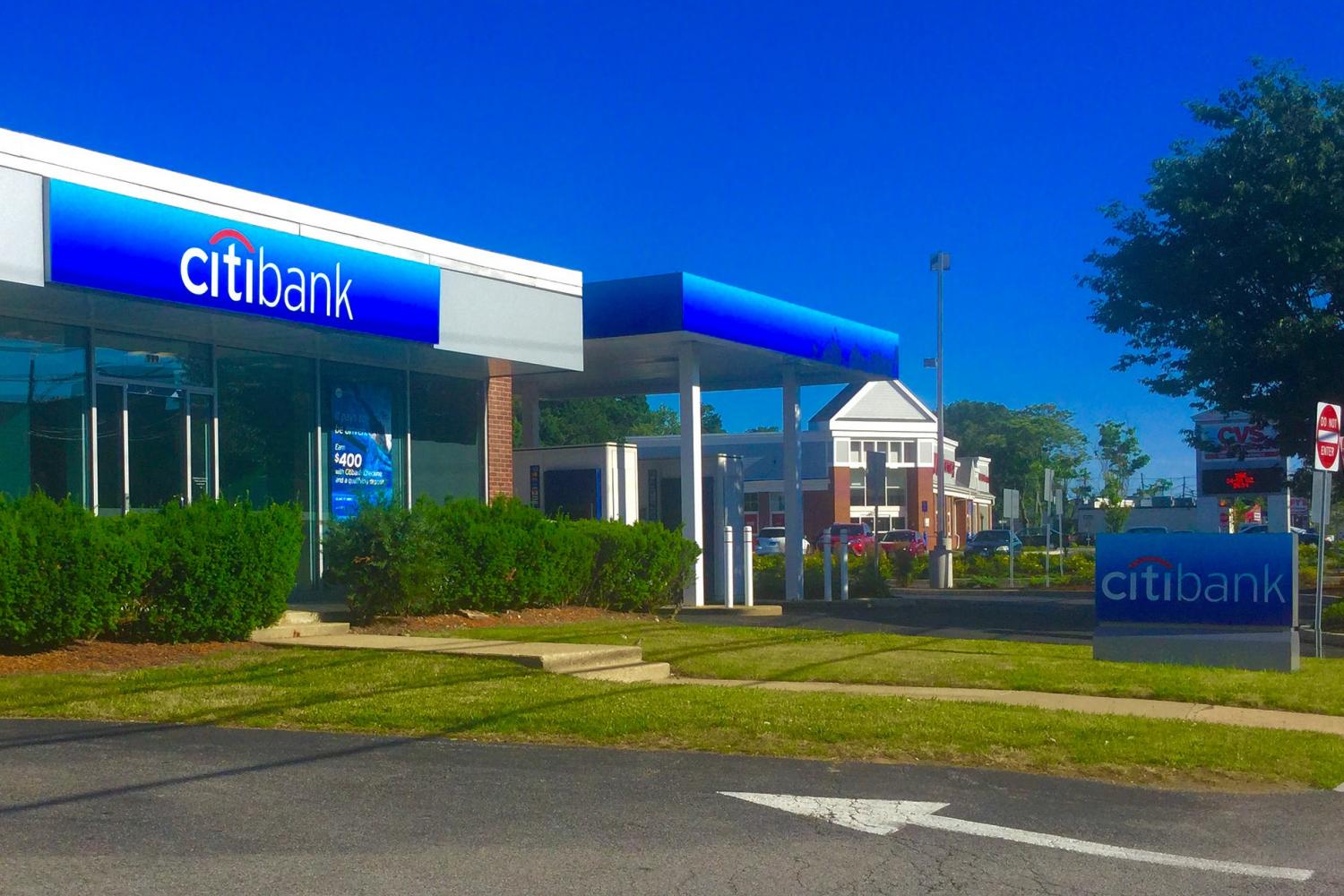
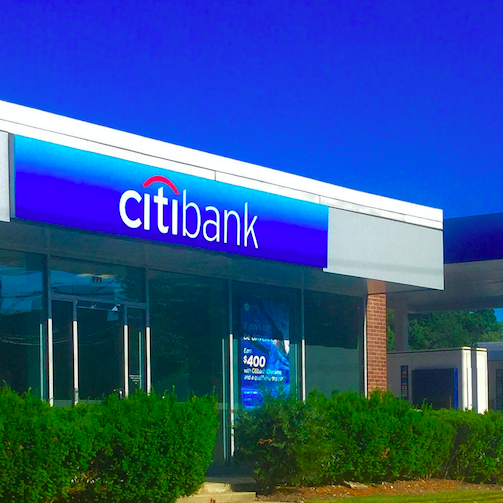
Some 78 percent of U.S. workers live paycheck to paycheck, a fact made painfully apparent during the recent government shutdown. Is the financial industry stepping up in the wake of these developments?
Some 78 percent of U.S. workers live paycheck to paycheck, a fact made painfully apparent during the recent government shutdown. Estimates suggest one in 10 Americans have no credit history, with profound financial implications. Now the Trump administration has rolled back protections for those who turn to risky payday loans for quick cash. Is the financial industry stepping up in the wake of these developments?
According to the Center for Financial Inclusion, the U.S. consistently ranks as one of the most affluent countries in the world, but these statistics obscure the financial health of the population. More than one in 10 Americans—nearly 45 million people—are living below the poverty line.
About 7 percent of American households lack access to a bank account, and about 20 percent are “underbanked” - that is, they have a bank account but they also use services associated with the financially excluded, including payday loans, the Center for Financial Inclusion found.
About 40 percent of Americans report not being able to manage a $400 unexpected expense.
Financial firms offer another way
Some banks like Southern Bancorp are offering alternatives tailored to financially underserved minority and rural communities in so-called “financial deserts,” and a start-up called Petal is offering a credit card to people without credit scores.
In addition, a small but growing group of non-bank lenders are working with U.S. employers to offer small-dollar financing tied to wages at a far lower interest rate than payday loans.
These are among financial sector leaders who recognize that financial inclusion initiatives address a huge underserved population. According to the Chamber of Commerce, businesses have the opportunity to reach up to two billion people by designing financial tools and resources to reach unbanked and under-banked communities.
The problem with payday loans
Payday loans are loans of typically $500 that require only a valid form of identification, proof of income and a bank account. The balance of the loan, along with the "finance charge" (service fees and interest), is typically due two weeks later, on the individual’s next payday. These loans are risky because they're expensive: The national average annual percentage rate (APR) for a payday loan is almost 400 percent. That's over 20 times the average credit card interest rate, CNBC reports.
Obama-era regulations would have required payday lenders to double-check that borrowers could afford to pay back their loan on time by verifying information like incomes, rent and even student loan payments. The rules were set to go into effect in August 2019. The Trump administration put the brakes on, however, and after a review, found the "ability to pay" requirements would restrict access to credit and proposed abandoning these safeguards.
The weakened protections have a direct impact on almost 10 million millennials who have taken out one of these high-interest, short-term loans in the past two years, according to a survey by CNBC Make It and Morning Consult. Nearly 40 percent of Gen Z have strongly contemplated taking a payday loan, the survey found, in part to cover costs associated with attending college.
Mission-driven banks for the underserved
Southern Bancorp takes a different approach to give people an alternative to payday loans. In the states where it operates, the number of unbanked is much higher than the national average of 7 percent, according to Euromoney; in Mississippi, for example, it is 12.6% while the underbanked are 25.5%.
As a certified Community Development Finance Institution (CDFI), Southern Bancorp is mission-driven rather than profit-maximizing. To obtain certification as a CDFI, banks are required to provide financial services primarily in low-income communities and to people who lack access to financing. Nationwide, there are more than 800 CDFIs.
Larger banks are also getting in on the action. Citi and Mastercard partnered with Grameen America, a leading nonprofit microfinance organization, to offer financial technology solutions designed to promote digital financial access and inclusion for more than 86,000 low-income minority women entrepreneurs across the U.S.
Tying small-dollar loans to wages
Non-bank lenders partner with U.S. employers to offer small-dollar financing tied to wages, as Bloomberg reports. United Way offers the platform Salary Finance, and Walmart partners with PayActiv, a San Jose, California-based fintech, to offer pay advances to its 1.4 million employees. Uber drivers can digitally cash out on their hours worked through Palo Alto, California-based Earnin.
Linking a loan to an employee’s salary “allows someone who would otherwise be paying 400 percent to get it at 10 to 15 percent,” Todd Baker, a senior law and public policy fellow at Columbia University’s Richman Center, told Bloomberg Law.
A new option for “credit invisibles”
Low-income consumers, especially those that are unbanked, often struggle to get approved, even for a low-limit credit card. An estimated 65 million people have insufficient credit history to quality for a traditional credit card.
Jason Gross, founder of Petal, formed the company to connect people with little to no credit history with a line of credit of up to $10,000, according to Fast Company. Petal looks at a person’s whole financial track record to determine creditworthiness, factors such as regular payments like rent, checking account cash flow, or history with prepaid debit cards or secure credit cards.
A study from the U.S. Federal Reserve found that only 42 percent of people earning less than $25,000 per year have a credit card. Gross told Fast Company that his aim was to extend credit to people who have previously been locked out of the system, like immigrants.
The Petal credit card has no annual, over-limit, late-payment, or international fees attached. While it is not a bank, Petal partners with WebBank, the online financial services platform that also powers PayPal and LendingClub. The company also provides data into the three major credit bureaus–Equifax, TransUnion, and Experian–so people can begin to build a traditional credit score through Petal.
Image credit: Mike Mozart/Flickr
Americans Trust Banks Less Than Ever: This CEO Offers a Fix


Aspiration Impact Measurement (AIM), which helps customers track the impact of their purchases, is just one way this upstart bank is seeking to change the game in consumer finance.
Trust in financial institutions has yet to fully recover following the economic crisis of 2008, according to communications firm Edelman, which assesses global perceptions of industries like finance via its annual Trust Barometer. As scandals from banking giants like Wells Fargo and Bank of America rocked the news, trust decline in the U.S. between 2017 and 2018 was the steepest Edelman has ever measured. Younger generations are even less likely to trust large financial companies: In a 2018 World Economic Forum survey of 30,000 millennials, only 28 percent said they trust banks to be fair and honest.
As trust in big banks curves downward, emerging financial technology companies are making serious gains among consumers. One such firm is Aspiration, a Los Angeles-based online bank that launched in 2014 and recently landed on Fast Company's Most Innovative Social Good Companies list. The company's CEO and founder, Andrei Cherny, is a former financial fraud prosecutor who served as a speechwriter for Bill Clinton and a lead negotiator of Al Gore's Democratic policy platform—giving him a unique vantage point from which to view American financial policy and practice. “Through that mix of experiences, I saw that there was a fundamentally broken relationship between people and their banks," Cherny told 3p. "There was a misalignment of interests and misalignment of values.”
Generally, the worse things are going in a customer's life, the more money big banks stand to make—in the form of overdraft fees, late fees and service charges, Cherny explained. These fees make up nearly 40 percent of some large banks' revenue. In many cases, banks invest the fees—along with customer deposits—in projects that may come as a surprise to their stakeholders. For example, a 2016 report revealed that the world's largest banks invested nearly $800 billion in extreme fossil fuel projects like coal mining and tar sands exploration over a three-year period.
"We decided to build Aspiration to invent something that hasn't been done before—which is sustainable, socially-conscious consumer banking at a nationwide scale," Cherny said. "Solving for trust is one of our core principles." The company's fossil fuel-free commitment and pay-as-you-wish fee structure have proven a fast hit. Personal finance advisory firm NerdWallet chose Aspiration as one of its best checking accounts of 2019, ranking ahead of most major banks and all fintech firms, and the company now adds more than 100,000 new customers every month, Cherny said.
Could Aspiration's sustainability-first model be the secret sauce for revitalizing trust within the financial sector? We took a closer look to find out.
The power of the dollar
Data continues to show that consumer preferences now trend toward brands with a purpose beyond profit. In a 2018 Nielsen survey, for example, 81 percent of global consumers said they feel it's important for companies to implement programs to improve the environment. However, there's often a disconnect between survey findings like these and actual purchasing patterns—indicating that even well-intentioned people often struggle to assess the impact of their daily consumption habits.
Aspiration offers a fix for this—and Cherny and his team think it can prove to be a brand differentiator, as well as a trust-building mechanism for wary customers. The company launched AIM (Aspiration Impact Measurement) in 2017, a mobile tool that allows customers to track the impact of purchases made with their Aspiration debit cards. With a few clicks on the AIM tool, customers can view their daily sustainability score—based on employee and environmental metrics of the places they shop—and learn about similar businesses with higher scores.
"People spend $36 billion a day as consumers," Cherny said. "If all of us do more to make spending decisions with people and the planet in mind, that is a way to push companies to do better and to encourage those that are already doing what's right."
"Trust is a two-way street"
All of Aspiration's financial products are FDIC-insured and fall under the company's Pay What Is Fair fee structure—meaning customers can set their own fees or even pay nothing if they choose. "Trust is a two-way street," Cherny told us. "We’re asking people to trust us with their core financial life, and we need to be able to trust them to do the same."
Most of the bank's customers choose to pay, Cherny said, which comes as a surprise considering nearly 2 in 5 Americans find bank fees more bothersome than a trip to the dentist, according to a 2018 survey from NerdWallet. "What we found is that if you treat people fairly, they will treat you fairly as well," Cherny said. "It’s up to us to earn the fee. If they think we earned zero, we need to be doing a better job."
Launched today, the company's latest fossil fuel-free banking product builds on its existing model while bringing it to the next level, Cherny said. The Aspiration Spend and Save account offers up to 2 percent in annual percentage yield (APY) interest on deposits—twice the rate of the company's prior accounts and up to 200 times more than what's offered by America’s largest banks, according to Aspiration. Customers also receive unlimited cash back on their purchases and—in a first for the banking industry—get a cash-back bonus for shopping at businesses with strong employee and environmental practices. "It incentivizes people to make spending decisions with people and the planet in mind," Cherny told us. "I think that's something really historic."
First comes love, then comes sustainable investing
Data indicates that younger generations are great at saving money—with over a third of them tucking away 10 percent of their salaries—but are often reticent to invest it. According to a recent study, more than 60 percent of Americans aged 18 to 39 consider investing in the stock market “scary” or “intimidating.” When younger Americans do invest, they're far more likely to choose socially responsible or impact investing products, TriplePundit reported last year.
These trends are consistent with what Aspiration has observed among its customers, said Cherny, who again cited the company's trust differentiators as a key driver among first-time investors. "The great majority of our customers come in through our banking services first, because most people who open accounts with us don’t have any investments whatsoever," Cherny said. "We see people then opening their first investment products with us, I think because of that relationship of trust."
Aspiration's retirement and investment products are fossil fuel-free and firearm-free. But, in addition to negative screens that remove problem industries from its portfolio, the company also uses positive screens to invest in more companies with high environmental, social and governance (ESG) scores. "It’s the kind of product that has usually been available only to higher-wealth clients, and we made available at a $100 minimum investment," Cherny said.
The bottom line
Along with its flex fee structure and commitment against fossil fuels, Aspiration donates 10 percent of its revenue to charitable causes and partners with groups like the Sierra Club to promote sustainable finance. To most in the traditional financial sector, removing fees and giving away money may sound like disastrous ideas that would hurt a bank's ability to remain competitive on the open market, but Cherny doesn't see it that way. "I think it makes us more competitive," he told TriplePundit. "When we first started, even something like sustainable investing was seen as a sideshow. People might pat us on the head and say, 'That's nice, but it's not real finance.' That has shifted over the past five years."
Unlike many other up-and-coming financial firms, Aspiration doesn't use a third-party sponsorship bank. Customers open their accounts directly with the company—putting it in a solid position as more people consider breaking up with their big-name banks in the interest of their values. "What we’re doing is helping to educate people who don’t really think about the fact that the money they deposit into an ATM isn’t sitting in a vault somewhere. It’s actually being lent back out, and in many cases being lent to industries that fly in the face of their own personal moral compass," Cherny explained. "This idea of banking with a conscience and thinking about where your deposits are going, which was even more of a sideshow early on, is now something that more and more people are thinking about in their daily lives."
Why the Green New Deal Doesn’t Have A Chance - Yet


In many ways, the Green New Deal echoes the ongoing concerns of the corporate social responsibility movement. The language is of the legislation touted by Alexandria Ocasio-Cortez and other Capitol Hill leaders is strong, yet the fundamental issues are familiar territory.
Bipartisan support for clean power is growing within the American public. Clean power also crosses party lines across the nation’s business community. The hard part is getting bipartisan support in the U.S. Congress for a strong federal clean power policy. Now the first real test of Congressional support is finally here, in the form of the Green New Deal.
Earlier this month in Congress, two Democrats in the Democratic-controlled House of Representatives introduced the Green New Deal in the form of H. R. 109. It already faces a vote in the Republican-held Senate, and the outcome could have a significant impact on the corporate social responsibility (CSR) movement.
CSR and The Green New Deal
In many ways, the Green New Deal echoes the ongoing concerns of the corporate social responsibility movement. The language is of H.R. 109 is strong, yet the fundamental issues are familiar territory.
Here is a passage laying out the duties of the Green New Deal in the area of social justice:
“…to promote justice and equity by stopping current, preventing future, and repairing historic oppression of indigenous peoples, communities of color, migrant communities, deindustrialized communities, depopulated rural communities, the poor, low-income workers, women, the elderly, the unhoused, people with disabilities, and youth (referred to in this resolution as ‘frontline and vulnerable communities’).”
The Green New Deal is also consistent with the Sustainable Development Goals adopted by the United Nations in 2015. The SDGs enable nations to track their progress in 17 areas. Global corporations are also beginning to recognize that SDGs can yield bottom line benefits as well.
For example, SDG #7 covers “Clean and Affordable Energy.” Similarly, the Green New Deal calls on the federal government to “achieve net-zero greenhouse gas emissions through a fair and just transition for all communities and workers.”
In particular, climate change is front and center in the Green New Deal, as it is for many businesses.
Just as corporate leaders are recognizing the disruptive power of climate change, the Green New Deal approaches global warming as an over-arching threat that exacerbates existing social problems, such as economic inequality and environmental justice among others.
Through the lens of the Green New Deal, climate change is also an opportunity to tackle these same issues with a sharp focus on job creation.
Why the Green New Deal may be toast, for now
Anyone familiar with Schoolhouse Rock’s famous “I’m Just a Bill” sequence can predict what will happen to the Green New Deal.
The resolution has already passed into various committees in the House of Representatives, setting the stage for a long series of hearings, debates, and commentary from the public, as is normally the case for legislation of broad national concern.
That provides the business community with ample time to weigh in.
If and when H.R. 109 (or something like it) gets to the floor for a full vote in the House, it could look very different from the resolution under consideration now.
Meanwhile, Senate Majority Leader Mitch McConnell has already jumped ahead and fast-tracked the Green New Deal proposal in the Senate. The full Senate will hold a full vote on the resolution in the near future.
That means the Senate vote will take place with little or no input from the business community or anyone else, for that matter.
So, why rush to hold a vote? Without digging too deeply into the weeds, the vote in the Senate is apparently meant to cause some politically awkward moments for Democrats. The common wisdom is that the vote will widen the rift between moderate and progressive Democrats.
Meanwhile, the common wisdom is that Senate Republicans can safely vote the proposal down.
That would be a short-term victory for McConnell and the Republicans, however. A poll recently conducted by Business Insider found that well over 80 percent of Americans are behind most of the policy proposals that comprise the Green New Deal. And two-thirds of those who participated in the survey said they are behind everyone one of the seven components of this plan.
With more corporations behind some aspects of the Green New Deal’s agenda, we are finding that the private sector could be ahead of government yet again.
Tomorrow: Tina Casey discusses why the Green New Deal, despite loud and vocal criticism, more of the U.S. business community will find themselves aligned more with this plan than with McConnell’s GOP.
Image credit: Senate Democrats/Flickr
How Brands Can Help Take a Bite Out of Plastic Pollution
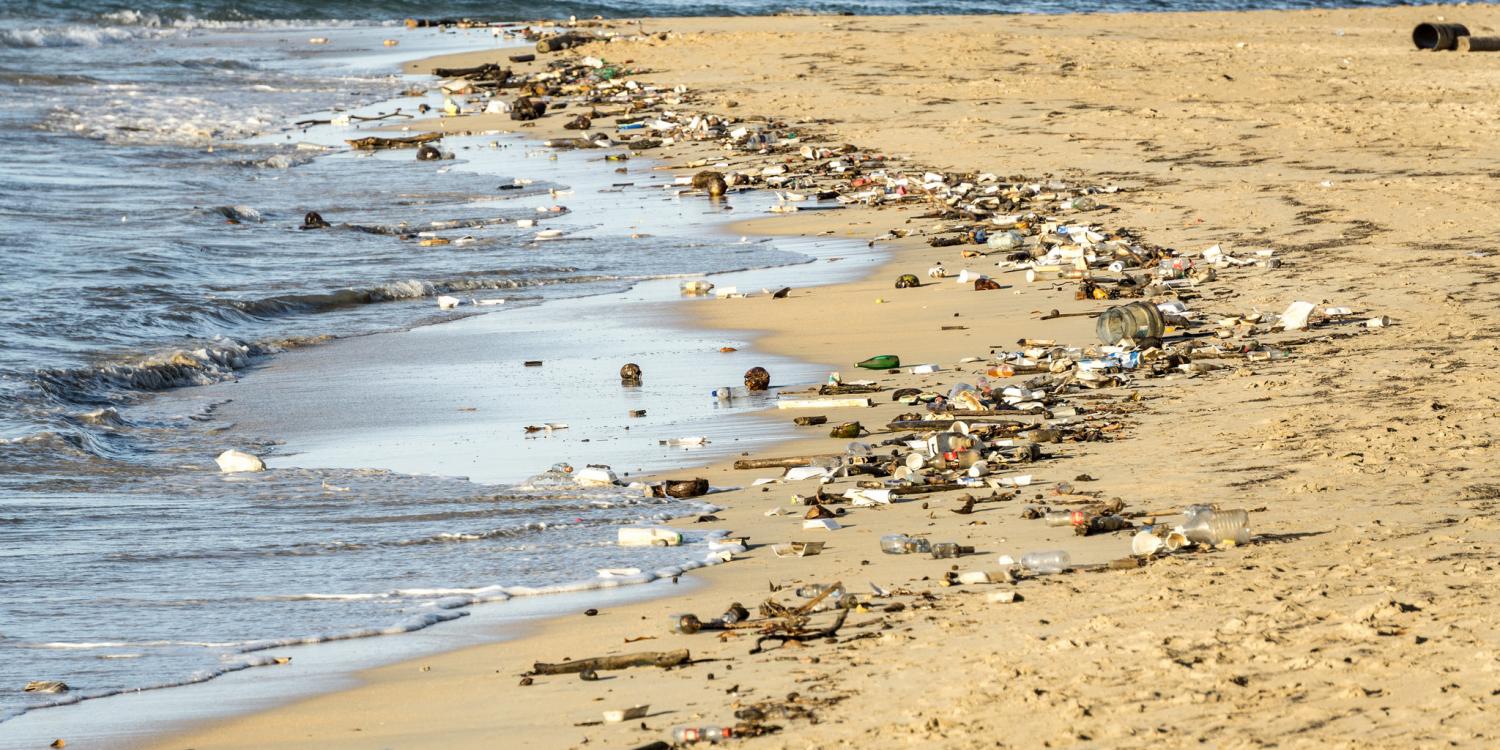
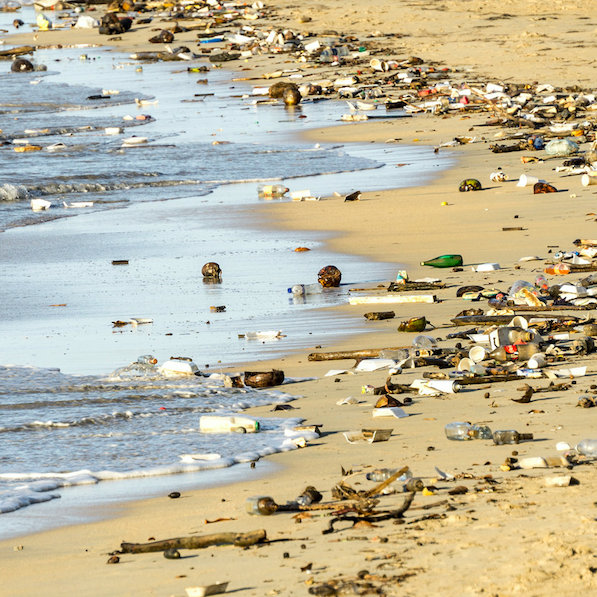
The massive scale of global ocean plastic pollution is daunting, but collective action can make a difference in more ways than one - and meanwhile, a change in fortune for petrochemicals is also beginning to emerge.
The massive scale of global ocean plastic pollution is daunting, but collective action can make a difference in more ways than one. Brands that enlist in the fight against plastic waste can have an impact beyond simply keeping plastic throwaways out of the environment. They can also help quash a looming threat posed by the rapid growth of the petrochemical industry.
Fossil fuel giants bank on more (and more) petrochemicals
The petrochemical trend is hard to miss. Here in the U.S., oil and gas giants including ExxonMobil have continued to ramp up their petrochemical operations at a rapid pace. ExxonMobil’s massive new project in Baytown, Texas is only one among many examples.
Last fall the Environmental Integrity Project (EIP) reported that Louisiana and Texas alone approved more than 30 new or expanded petrochemical projects. The impact isn’t pretty. According to EIP, greenhouse gas emissions related to the new projects total up to the equivalent of 11 new coal power plants.
Part of the motivation for all this activity is the expectation of a growing middle class in Asia and Africa, leading to expansive new markets for plastic products.
The shift into petrochemicals could also help oil companies hedge against falling demand for fuel products, as the electric vehicle market begins to hit mainstream speed.
Signs of life in the ocean plastic pollution fight
All of this is bad news for the fight against plastic pollution. However, a change in fortune for petrochemicals is also beginning to emerge.
One early warning appeared back in September 2017, when Kenya opened fire in the war against plastic pollution with stiff penalties for manufacturing, importing, selling or using plastic bags.
The movement against plastic straws is also helping to gain traction for the broader issue of plastic pollution.
Here in the U.S., Los Angeles first tried to ban plastic bags back in 2013. That ban did not take hold until 2016, and now other cities are following suit. That includes more than a dozen in New Jersey, where the state legislature is also considering a statewide ban.
Apparently, the message is not getting through to oil industry forecasters. Last October, Bloomberg took note of optimistic projections for global petrochemical growth by the International Energy Agency.
However, earlier this week Bloomberg highlighted a fatal flaw in the conventional growth projections for oil demand.
“Projections of growth in oil demand led by petrochemicals are by no means a sure thing,” Richard Chatterton, BNEF’s Head of Oil Demand, said in a report looking at the future of plastics and oil demand. “The world’s growing concern about plastics waste, combined with small but growing competition from bio-based plastics, casts serious doubt on those projections.”
The problem is that the number crunchers assumed that the demand for plastic products would keep pace with global GDP or even outrun it. They placed little weight on the ability of recycling or non-plastic alternatives to counterbalance that trend, let alone reverse it.
That was a mistake.
Brands are swelling the ranks of plastic pollution fighters
According to BNEF, market forces and government policies are already promoting an increase in the global recycling rate of about 1 percent annually. The current total recycling rate now stands at 18 percent.
Public awareness is also becoming a major driver of policy, as illustrated by the growing public support for banning plastic straws and bags. The element of strong public support is important for both corporate and government policy makers.
Leading companies like Coca-Cola and McDonald’s are also beginning to see marketing opportunities in engaging with the fight against plastic pollution.
That can include using less plastic, as well as using recycled plastic.
One good example is AB InBev’s Corona brand. The company has adopted biodegradable six-pack rings as part of a broader effort to raise awareness about ocean plastic pollution. The initiative also includes Corona-sponsored beach cleanup activities.
In terms of branding, the ocean protection element dovetails neatly with Corona’s established brand identity, which has long focused on beach culture and the enjoyment of the natural environment.
Another good example of integrating brand identity with the fight against ocean plastic pollution can be found on the smaller end of the business scale as well. For example, the fashion brand Mara Hoffman began including recycled plastic performance fiber in its swimwear two years ago.
Recyclers are also pushing the trend by tailoring their products to attract brands that want to take a hand in tackling ocean plastic.
The recycled material specialist Unifi, for example, offers a “REPREVE Our Ocean” version of its proprietary REPREVE fiber, which is manufactured from recycled bottles. The Ocean version is made with bottles collected from communities on or near coastal areas, as well as from discarded plastic accumulated in countries that lack mature recycling resources.
An even better idea: reduce single-use items
Major brands are also beginning to attack the plastics problem at its core, by introducing consumers to reduced or multiple-use packaging.
Japan’s Kao, for example, has achieved impressive success with its refillable packaging household products in its home country. The company is best known in the U.S. for its Jergens products. Its future plans include introducing more reusable packaging to U.S. consumers.
A dozen or so other major brands have already signed up to partner with a startup called Closed Loop partners, which will launch operations in the U.S. and France this year. The Loop’s app-based business model will let consumers order deliveries of their favorite brands in reusable containers. UPS will drop off the orders and pick up empty containers to be cleaned and re-filled.
All of these trends - recycling, reusing, and alternative materials trends - have been growing slowly, one brand at a time. As demand picks up and these brands’ supply chains grow and mature, that supposed growth in demand for petrochemicals could wilt under the pressure of demand for a more sustainable approach to materials and resources.
Image credit: Rey Perezoso/Flickr
Technology Advancements Boost Traceability in the Food Sector


This article series is sponsored by General Mills and produced by the TriplePundit editorial team.
In cases of widespread foodborne illness, like last year’s E. coli outbreak linked to romaine lettuce, the next step is to determine where along the food supply chain the contamination occurred. That’s where food traceability—the ability to trace a product through every step in the supply chain, from point of origin to final retail location—comes into play.
Beyond its critical role in food safety, traceability is also becoming increasingly important to meet consumer demand for more healthy food choices produced in ways less harmful to people and the environment. For consumers, traceability adds a layer of credibility to claims like non-GMO, organic, free range or “sustainably sourced.”
But end-to-end traceability—from farm, to factory, to fork—is a big challenge. Agricultural supply chains are complex, involving layers of wholesalers and distributors. Many ingredient supplies rely on smallholder farmers, the majority of whom still use paper-based record keeping. That’s why new, tech-driven approaches are emerging to improve traceability and promote better transparency along these complex supply chains.
Tech for traceability: Tracking the food supply with blockchain
Blockchain technology seems to be everywhere these days—and the food industry is no exception. Blockchain, the technology that enables cryptocurrencies like Bitcoin, is particularly well suited to supply chains because it creates secure, transparent and virtually incorruptible ledgers of transactions.
Several companies are exploring what blockchain can do when it comes to food traceability. Walmart, for example, recently ran a proof of concept using IBM’s Hyperledger Fabric blockchain solution. It all started with a challenge from Walmart’s vice president of food safety to his team: trace a package of sliced mangoes back to its source. It took almost a week (six days, 18 hours and 26 minutes) to get an answer. After implementing a blockchain system to track the mangoes, it took just a few seconds.
Starting at the farm where the mangoes are grown, each pallet is tagged with a unique numeric identifier. As a pallet moves from farm to broker to distributor to store, its status is logged as a transaction in the blockchain. At any point in its journey, a Walmart employee can track the pallet using a Web-based program.
Carrefour, Europe’s largest retailer, is using blockchain to trace the production of free-range chicken in the Auvergne region in central France. To provide full farm-to-fork traceability, Carrefour developed a nifty smartphone app that consumers can use to scan a code on the package. This allows them to see information for each stage of production, including where and how the chickens were raised and what they were fed. The company plans to expand blockchain use to other products like honey, eggs, milk, tomatoes, hamburgers and salmon.
Other big companies are also jumping on the blockchain train. Last year, Nestle, Unilever and Tyson Foods announced plans to explore how blockchain technology can help track food supply chains to ensure that products meet ethical and safety standards.
Cloud-based systems bring suppliers into the digital age
Cloud-based systems also improve food traceability by allowing suppliers to move away from paper-based record keeping to online tools like Ingredion’s Truetrace system. Ingredion makes sweeteners, starches, and other food and beverage ingredients from plant sources such as maize, wheat, corn, rice and potato. A major portion of its portfolio is based on non-bioengineered/non-GMO ingredients. The company uses Truetrace, an in-house system, to trace ingredients throughout the manufacturing process—from when the seed is planted to the delivery of the finished product.
“Instead of handwriting or filling out Web forms to provide planting and harvest data, growers can now upload info via thumb drives to streamline the documentation process,” Andrew Utterback, manager of commodities purchasing for Ingredion, told Food Business News. This gives the company the ability to “trace any batch of starch back to the farmers who grew the corn, the fields on which the corn was grown, and the seed varieties and lots used,” he added.
Partnerships boost transparency across the food sector
The multi-stakeholder initiative Field to Market: The Alliance for Sustainable Agriculture brings partners together to boost transparency across the food and agriculture sector. The nonprofit collaborative comprises more than 140 companies representing all facets of the U.S. agricultural supply chain.
Field to Market provides several resources to help its members improve traceability and operate more sustainably, including the online Fieldprint Platform. Growers can use this free online calculator to measure their practices against environmental outcomes like land use, irrigation water use, energy use, greenhouse gas emissions and soil loss. Their results are kept confidential, while the tool allows them to benchmark themselves against state and national averages.
Additionally, to ensure their products can be traced back to sustainable agricultural practices, many food manufacturers are working directly with farmers to create segregated supply chains for their ingredients. This allows manufacturers to take direct control of their supply chains, rather than working through a string of distributors and wholesalers.
For example, Annie’s—one of General Mills’ organic brands—set up a segregated supply chain to source organic grain from two farms in Montana. The grain is grown using regenerative agriculture techniques and is ultimately used to create limited-edition Honey Bunny Grahams crackers and Elbow Pasta and Cheddar meals for Annie’s.
For those who aren’t familiar, regenerative agriculture is a system of farming practices that “leads to healthy soil, capable of producing high-quality, nutrient-dense food while simultaneously improving rather than degrading land,” according to
Regeneration International, a nonprofit advocacy group. Soil maintained according to these practices is also better at sequestering carbon compared to conventional farming methods.
Ordinarily, big food companies like General Mills mix grains from several sources when making products. While segregating the supply from one or two farms guarantees traceability, the process is complicated and costly for now. Still, many companies are moving in this direction based on consumer demand and their own recognition that protecting the farmland where their products originate will be good for their bottom line over time.
The bottom line
Unless you grow all of your food in your backyard, you should be concerned about food traceability. The good news is: As methods of traceability advance, our food supply will become safer and our environment better protected. Keep your eye on this space as technology applications in food traceability continue to grow.
Image: Scott Warman/Unsplash
PG&E Shakes Up Governance: Can It Restore Investor Confidence?


In the U.S., when a company has a role in an accident causing over $50,000 in damages, hospitalization or death, it must report that event at both the federal and state levels. Utility company Pacific Gas & Electric (PG&E) reported more such accidents from 2004 to 2010 than any other U.S. firm and was cited for 411 safety violations over the same period. The company responded by placing responsibility on outside factors, such as vehicles hitting pipelines. However, investigations into its extensive history of safety violations indicate that external circumstances played a limited role in these accidents. Also left unanswered was the question of why PG&E’s upper management seemed unable to respond to recurring issues and make appropriate remedies.
Now, after filing for Chapter 11 bankruptcy in January and seeing its stock lose 52 percent of its value on the day of that announcement, PG&E faces a major crisis of confidence with the investment community as well as with its customers. The poor history of accidents on the utility’s record set the stage for the issue of inadequate corporate governance to become magnified many times over by lawsuits connected to the devastating California wildfires. (Prior to the bankruptcy filing, investors were already savvy to the governance problem: For two months prior to the bankruptcy announcement, they had been jumping on the selling boat.)
Just how bad was that governance? The California Public Utilities Commission (PUC) investigated the company and found that PG&E lacked the staffing capabilities to label its natural gas pipelines. Under pressure to comply with laws on timeliness, supervisors at the company were accused of falsifying records between 2012 and 2017. They did so, according to the Commision, to avoid late ticket penalties, but at the cost of compromising confidence in the company. According to the Commission’s report published in 2018, it was “common knowledge” at PG&E that this was occurring. A manager at the company told the Commission that part of his job performance evaluation was based on his ability to produce zero late tickets. The widespread nature of these alleged falsifications could largely be accounted for by this ill-advised evaluation method.
Preventing this poor management from happening again requires a total shift in PG&E’s corporate culture and values, and the company is now making attempts to move in the right direction by replacing 10 members of its board of directors. These new members will have the task of aligning the company’s values toward safety and long-term profitability rather than short-term solutions. Doing so will require the new board to hire managers and chief officers that commit to maximizing value for all stakeholders, including customers, employees and shareholders. This is especially important for utility companies that face the challenges of operating in the wake of an increasing number of catastrophic environmental events, such as the California wildfires.
A new CEO could guide the company to a re-set in this direction. Currently, PG&E is led by interim CEO John R. Simon. Geisha Williams, the company’s most recent CEO, abruptly resigned in January, around the same time that the company declared bankruptcy.
Initial reponse by the investment community has been positive. Shares have stabilized over the course of the past month, appreciating 91 percent between January 14 and January 15. The company’s market capitalization is a long way short of its value before bankruptcy fears started, but this upward trend provides some promise for the company’s future. Investors seem hopeful that PG&E has the potential to turn itself around, but this will ultimately be decided by a new CEO’s ability to redefine the company culture and implement better business practices.
Image credit: QuoteInspector.com/Flickr
Bigger Than the Game: Five NBA Players Giving Back


This week's break in the NBA’s packed schedule for its annual All-Star Weekend gave us time to reflect on the far-reaching work the league and its players have been doing in communities across the U.S. and abroad.
The NBA’s All-Star Weekend showcases its superstars with entertaining 3-point and slam dunk contests, skills challenges and celebrity games, all culminating in a high-scoring, dunk-heavy All-Star game featuring the world’s premier players. While it serves as a reminder of the mind-blowing athleticism of these NBA greats, the break in the NBA’s packed schedule also gives us time to reflect on the far-reaching work the league and its players are doing in the community.
This year’s All-Star Weekend in Charlotte kicked off with a day of service. NBA players, accompanied by hundreds of volunteers and service members, participated in three projects throughout the city, packing and sorting food donations to be distributed to those in need, beautifying a community space and refurbishing a computer lab. The projects are expected to have an impact more than 1,500 children in the Charlotte area.
The commitment to serve the community extends well past the All-Star Day of Service, as players have become year-round ambassadors for giving back. Let’s take a look at a few players who have gone above and beyond:
LeBron James, Los Angeles Lakers
No surprises here. LeBron James (shown above hugging then-First Lady , whose list of basketball accomplishments earned its own lengthy Wikipedia page, epitomizes this commitment to giving back to his community. The LeBron James Family Foundation has raised tens of millions of dollars to tackle high drop-out rates for at-risk youth in James’ hometown of Akron, Ohio. Most recently, James’ Foundation opened the I Promise School, a public school in Akron in which graduating students with a minimum GPA of 3.0 are offered free tuition to Akron University. Even James’ controversial live TV program several years ago when he announced his decision to leave his homegrown Cleveland Cavaliers in free agency to chase championships for the Miami Heat raised a total of $6 million for charities.
Kevin Durant, Golden State Warriors
Considered one of the greatest pure scorers in NBA history, swingman Kevin Durant recently committed $10 million to jumpstart a College Track chapter in Prince George’s County, Maryland, where he grew up. College Track’s nine chapters, which span across California, Louisiana and Colorado have helped put nearly 3,000 students through college. The program commits to supporting students for ten years, giving students starting in ninth grade access to financial aid, tutoring, test preparation courses and more through college graduation. The College Track in Prince George’s County will be the first of three slated to open in the next several years in the greater Washington metropolitan area.
Steph Curry, Golden State Warriors
The shifty point guard, world champion and two-time MVP Steph Curry makes assists on and off the court. Consistently among the most philanthropic players in the league, Curry has been active both in the United States and abroad. Since 2012, Curry has donated three malaria nets per three-point shot made - quite remarkable considering he is arguably the best three-point shooter in NBA history. In 2016, he took the fight against malaria to the next level when he partnered with the United Nations and USAID to promote the #CallYourShot social media challenge aimed to raise money to protect families from malaria. Most recently, he’s committed to donating one malaria bed for each signature Nothing But Nets sneaker he sells (10,00+ to date).
More locally, Curry’s annual ThanksUSA golf tournament has raised more than $150,000 since it started in 2011 to give scholarships to the spouses and children of active-duty military. To echo Durant and James’ commitment to giving back to their hometown, Curry announced yesterday that he’s partnering with Under Armour and Chase Bank to pledge a “seven-figure commitment” to renovate Charlotte's Carole Hoefener Center.
Sterling Brown, Milwaukee Bucks
Sterling Brown, a second-year role player for the current Eastern Conference-leading Milwaukee Bucks, has been on a different trajectory when compared to the three future Hall of Famers listed above. Brown joined Puma’s #REFORM campaign last year after a viral video showed Brown as a victim of police brutality. Brown, while he was surrounded by a handful of police officers, was tasered and arrested after being berated for parking illegally. He is channeling the incident into positive change - joining the #REFORM campaign and raising awareness against police brutality and the criminal justice system. In a February 2 game against the Washington Wizards, Brown wore a pair of black sneakers in the first half to symbolize the prison system and red shoes in the second half to commemorate the blood spilled and the sacrifice made in the fight against oppression.
Isaiah Thomas, Denver Nuggets
It’s nearly impossible to capture all of the positive impact Isaiah Thomas has made since coming into the league in 2011. The former Boston Celtics frontman is a fixture at Boys and Girls Clubs charity events, raised hundreds of thousands of dollars for victims of a fire in Cambridge, Massachusetts, has supported the building of a stunning basketball center in his hometown of Tacoma, Washington and holds charity backpack giveaways. Thomas’ commitment to helping his community in each of the four cities he’s played in during his eight-year career earned him the 2016-17 NBA Community Assist Seasonlong Award.
Image credit: Obama White House/Flickr
Tech Companies Are Helping Enforce Gender Apartheid in Saudi Arabia


Apple and Google have been accused of contributing to gender inequality in Saudi Arabia by allowing their smartphone platforms to host a government-run app that allows men to not only track women, but even prevent them from leaving the country. The result is another breach in public trust, and could complicate these companies' efforts to attract and retain talent in the coming years.
Once again, the world’s leading technology companies find themselves mired in controversy over their smartphone platforms’ hosting of an app that allows Saudi Arabian men to track and even control their female family members. This news comes at a time when much of the public still lacks trust in technology companies and younger workers want to work for brands they believe can make a positive difference for society – not move it backward.
After all, recruiting top talent is a rising motivation for businesses to grow strong corporate social responsibility (CSR) platforms. The reason is simple: businesses are increasingly tuning in to the value that workers are placing their employers' social responsibility.
Today’s talent also has more sophisticated expectations for corporate social responsibility. Racking up points for charitable giving and volunteer activities is not enough. These employees want companies to reflect their core values, too.
A new, academically rigorous study published earlier this month in Business Ethics reinforces the findings of other studies and surveys. The researchers concluded that employees are more committed to businesses that “ingrain CSR activities” into their vision and business model.
Corporate social responsibility and gender equality
One of those core values is gender equality, and the past two years have added potent new fuel to a simmering fire. The election of an admitted sexual abuser to the highest office in the United States, the impact of the #MeToo movement, women’s leadership in advocating for gun safety and the new wave of women in Congress are among the leading factors pushing gender equality to the top of the CSR list.
With that in mind, let’s take a look at some recent news that should be very concerning to Apple and Google.
On February 1, Business Insider published an in-depth article about an app promoted by the Saudi government for use in controlling the movement of women. In a few reported instances Saudi women have hijacked the app to escape from the country’s “guardian” system, but essentially it is designed for guardians to prevent any unauthorized travel by women:
“Apple and Google have been accused of helping to ‘enforce gender apartheid’ in Saudi Arabia, by offering a sinister app which allows men to track women and stop them leaving the country.”
Both Google Play and iTunes currently host Absher, a government web service which allows men to specify when and how women can cross Saudi borders, and to get close to real-time SMS updates when they travel.
Since then, the story has snowballed. It began to gain traction after February 8, when Business Insider followed up on its earlier coverage with a shorter piece on its thisisinsider.com site. The article ran under this incendiary headline:
“Apple and Google accused of helping 'enforce gender apartheid' by hosting Saudi government app that tracks women and stops them leaving the country”
By February 13, The New York Times reported that Apple and Google were feeling the heat:
“A Saudi mobile application that lets men track and restrict the movements of women in the kingdom has come under increased scrutiny this week with an American senator and rights groups urging Apple and Google to remove it from their platforms, accusing the technology giants of facilitating gender discrimination.”
The senator in question was U.S. Senator Ron Wyden (D-Oregon), who brought attention to the issue in an open letter addressed to Apple and Google:
“It is hardly news that the Saudi monarchy seeks to restrict and repress Saudi women, but American companies should not enable or facilitate the Saudi government's patriarchy . . .”
Why U.S. businesses need to step it up
Left unsaid in Senator Wyden’s letter was the reason why it is so important for American corporations to police their relationships with the Saudi government from a social responsibility perspective: because the U.S. government will not.
Last year’s state-sanctioned killing of Saudi journalist and U.S. resident Jamal Khashoggi sparked a wave of criticism from the business community, but President Donald J. Trump refused to accept intelligence assessments linking the crime to Saudi Crown Prince and First Deputy Prime Minister Mohamed bin Salman.
Without leadership from the White House on a matter of international affairs, the business community was left dangling.
Still, the Khashoggi murder has continued to fester, and the infection has been spreading.
The murder brought renewed public attention to business ties between Saudi investors and Silicon Valley.
News of the Absher app piles on even more pressure for tech companies like Apple and Google to take control of this ongoing social responsibility conversation.
Earth to Google: move faster on gender equality, please
Google is especially vulnerable on issues of gender equality. Only two years ago an engineer at the company sparked a massive backlash when he posted an internal memo questioning the value of women engineers.
Last November, Google employees worldwide took part in an “unprecedented” walkout protesting the treatment of women at the company. Sexual harassment, misconduct, lack of transparency and workplace culture were among the issues behind the walkout.
Google had no comment on the Absher app initially. But by February 14 the company was changing its tune and pledged to investigate the matter.
Apple put on the spot
There are probably higher expectations for Apple to act, because the company has established some recent success with its gender equality initiatives.
That’s coming from the top. Apple CEO Tim Cook has placed gender equality front and center from a bottom line perspective, as demonstrated by an April 2017 interview published the Auburn Plainsman (the newspaper of his alma mater):
“I think the U.S. will lose its leadership in technology if this doesn't change,' Cook said. 'Women are such an important part of the workforce. If STEM-related fields continue to have this low representation of women, then there just will not be enough innovation in the United States.”
Last week Cook told National Public Radio that he was previously unaware of the Absher issue, but he only stated that the company “will take a look at it."
Losing the CSR narrative
American tech companies are already under fire for, among other issues, failing to control a wide range of hate speech directed at women and other abuses in popular social media platforms including Facebook, Twitter and YouTube.
The lack of a strong, coordinated response to the Khashoggi killing is another black eye.
The Absher app cuts straight to the core of the tech sector’s commitment to gender equality. If Google and Apple fail to formulate a meaningful response, they could risk missing out on the next generation of innovators.
Image credit: Mojack Jutaily/Flickr
Barbie Done Better: Mattel Launches More Inclusive Dolls
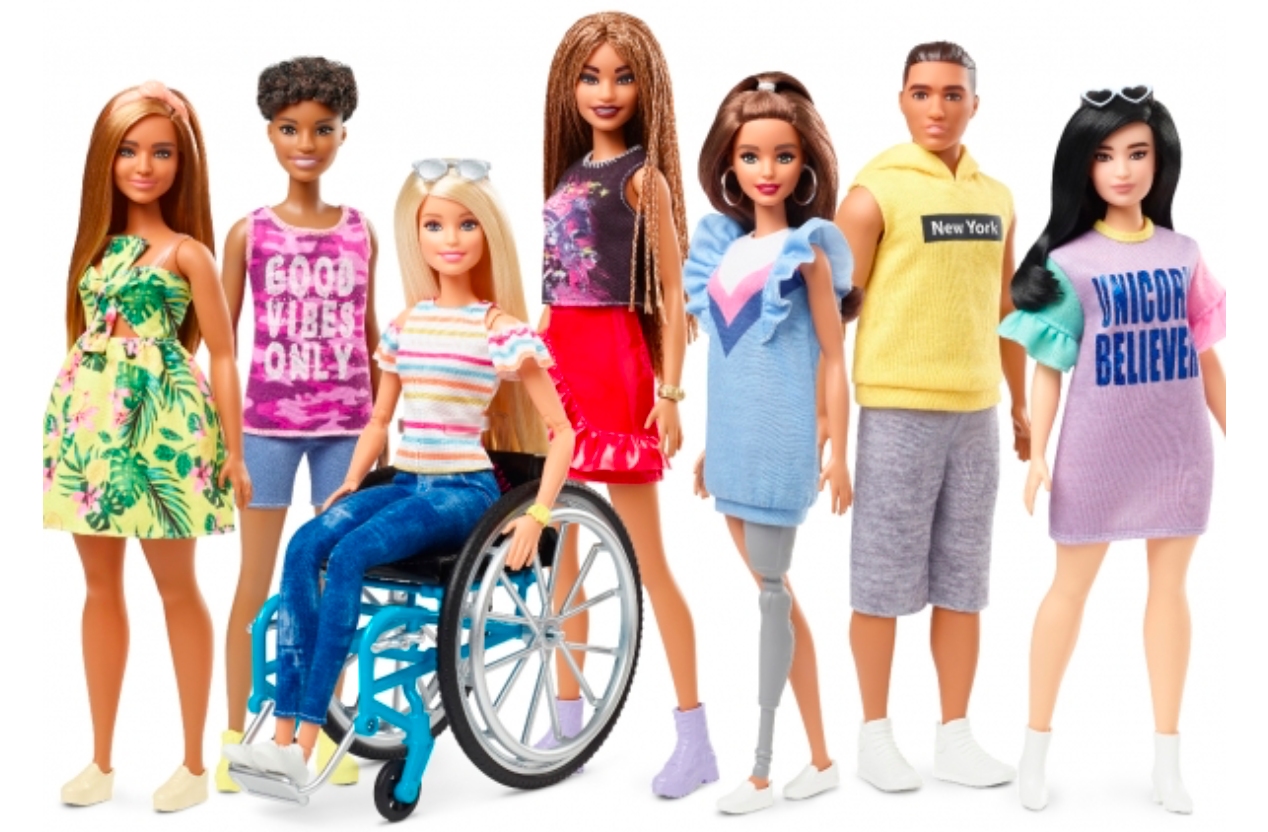

Before the film Crazy Rich Asians (2018), some people didn’t believe a movie with an all-Asian main cast would succeed on the big screen. However, the film became a big hit, grossing more than $238 million in worldwide box offices. In a time when we are seeing more diversity of people through films, toys and more, companies are recognizing the importance of representation. The push for diverse representation has challenged companies to break outside of the traditional ideals of beauty and move toward a more inclusive and intersectional future.
In the wake of this movement, the iconic Barbie doll collection is further expanding. The company behind Barbie, Mattel, released its Barbie Fashionistas line in 2016, which emphasizes diversity within beauty. Its newest release in the line includes a Barbie that uses a wheelchair and a Barbie with a prosthetic limb.
Inclusive representation is the crux of Mattel’s new line, according to the company. “Our latest Barbie and Ken Fashionistas feature even more skin tones, eye colors, hairstyles, and fashions! And now Ken comes in three body types: broad, slim and original,” the company advertises. The toys aim to reflect the different shapes and looks of people that exist within the world, and to encourage young children to feel seen and represented. The company also recently released Barbies who work within the STEM field, which aim to encourage girls to go into STEM careers like math and science, Mattel says. The company has also challenged gender norms by releasing a “Moschino Barbie,” which caters toward boys, thus challenging the standard that only girls can play with dolls, and it created its first Barbie with a hijab in 2017.
Its newest launch focuses on Barbies with physical disabilities, including a Barbie who uses a wheelchair and a Barbie with a removable prosthetic limb. These models, which will be released this year, will show little girls and boys with physical differences that dolls can look just like them, and teach others that beauty isn’t confined within a small box. "As a brand, we can elevate the conversation around physical disabilities by including them into our fashion doll line to further showcase a multi-dimensional view of beauty and fashion," Mattel said in a press statement, as reported by CNN.
The new Barbies were created with the help of wheelchair experts, UCLA Mattel Children’s Hospital and 12 year-old Jordan Reeves. Reeves has a limb difference and is an activist in favor of dolls who look like her or have other physical differences. It’s significant that “a big icon of society like Barbie now demonstrates or shows that there are different types of people ... [who] can be attractive and something kids want to play with," Curt Decker, executive director of the National Disability Rights Network, told Yahoo Finance.
In addition to the benefits of strong body positivity for consumers, offering a wider range of Barbies creates a wider customer base, which benefits Mattel's revenue and goodwill. Now boys, children with physical differences, people of all skin tones, and all different types of interests, are included— and they are adding to the company’s audience. Goodwill is also a long-term benefit and asset, since it can take years to build and is essential to companies that base their business around nostalgia. As the company released its newest, more diverse Barbies, it also reported a surge in profits in the fourth quarter, prompting its stock price to rise by more than 15 percent last week.
These newest dolls will be available in the fall. In the future, Mattel says it may make a same-sex wedding set, but we will have to wait and see.
Image credit: Mattel